Complete Left Bundle-Branch Block
The QRS complex in LBBB has a bizarre configuration and a duration of 0.14 seconds or longer. The unusual QRS morphology occurs because the vectors from the septal wall and left ventricle are directed toward the left, slightly superiorly, and posteriorly.
In LBBB, the left ventricle gets its impulse from the right ventricle through the interventricular septum, which bypasses the left bundle branch. The left ventricle will come to a standstill if this does not occur.
ECG Characteristics of LBBB
The precordial leads in complete LBBB show a broad rS complex in leads V1 through V4 with a sudden shift to a positive deflection in leads V5 and V6. R is broad and may be notched (bifid R wave) without a q wave. Sometimes this sudden amplitude shift may occur earlier and be seen in leads V3 or V4.
The limb leads in complete left bundle-branch block may show a left and superior axis deviation.
- Leads I and aVL depict a broad R wave, without a q wave.
- Leads III and aVF generally show an rS complex and rarely a QS complex, which can be mistaken for an inferior MI.
- The QRS is broad and the T wave is positive and asymmetric, which helps differentiate from a previous MI in the inferior wall.
Case 3
A 46-year-old man, admitted with a myocardial infarction. ECG diagnosis shows an anterior wall MI with complete LBBB.
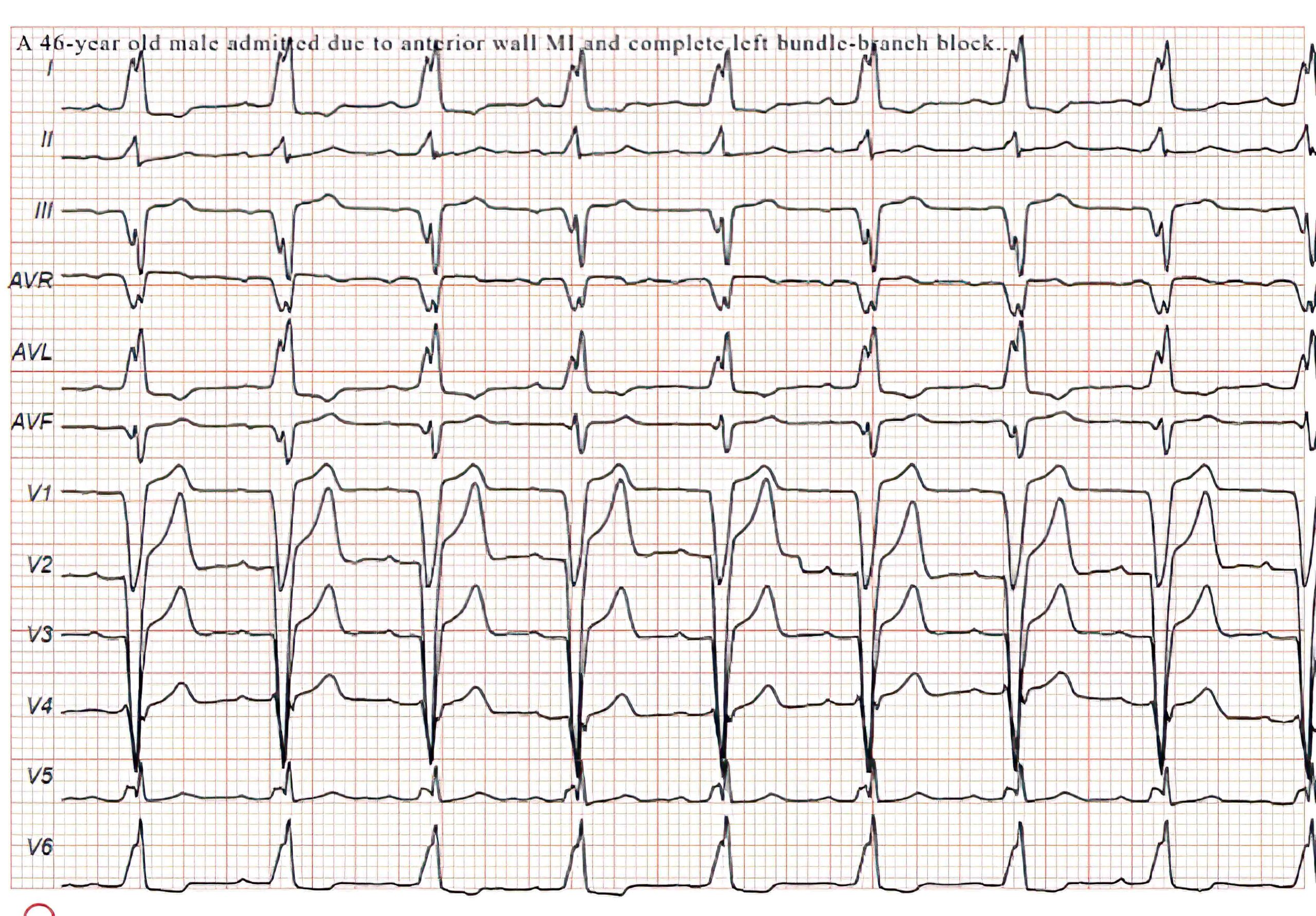
46-Year-Old Man With Complete LBBB ECG
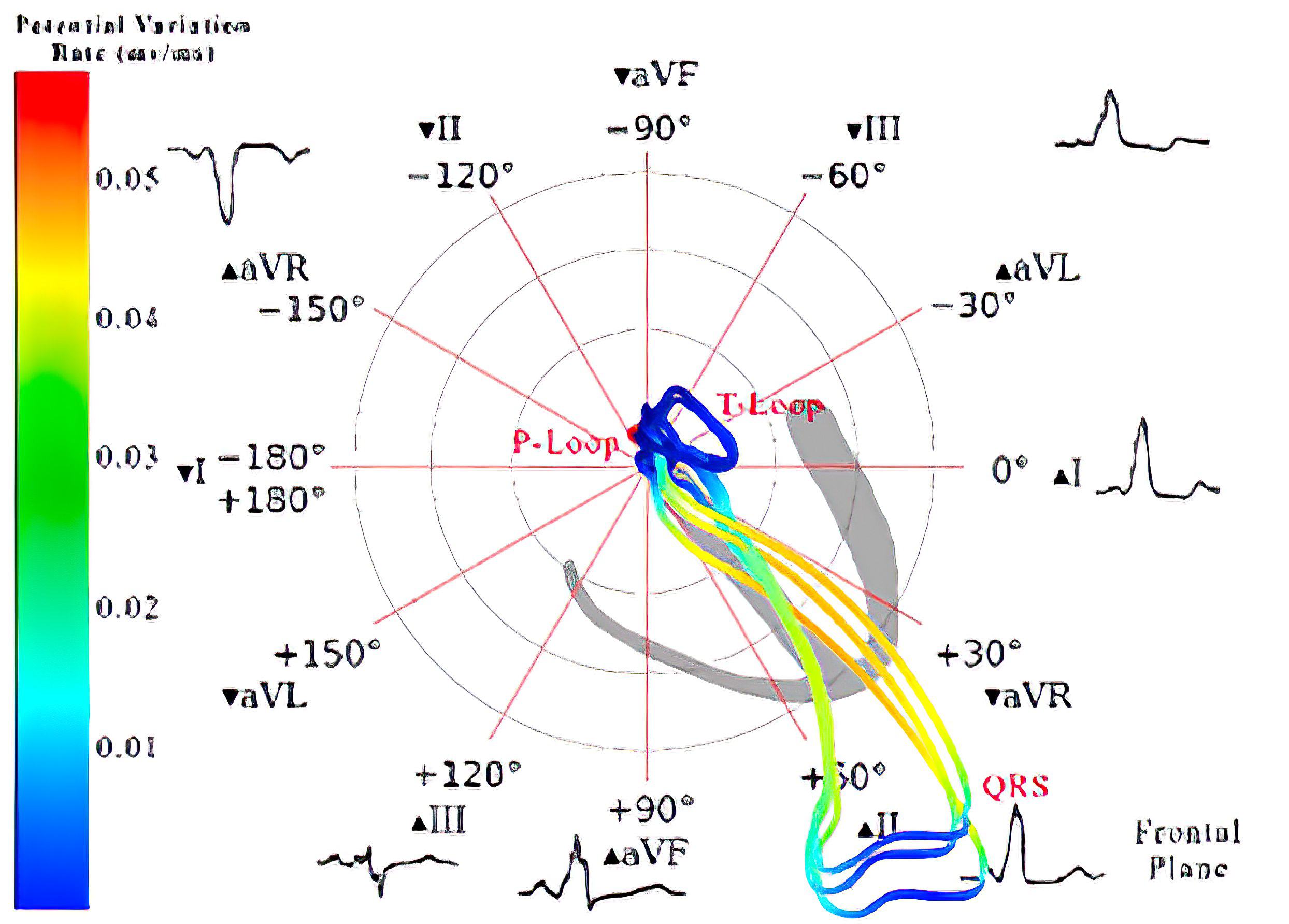
Vectorcardiograph (Frontal Plane) and Electrocardiograph Between Complete LBBB (Left) and Normal (Right)
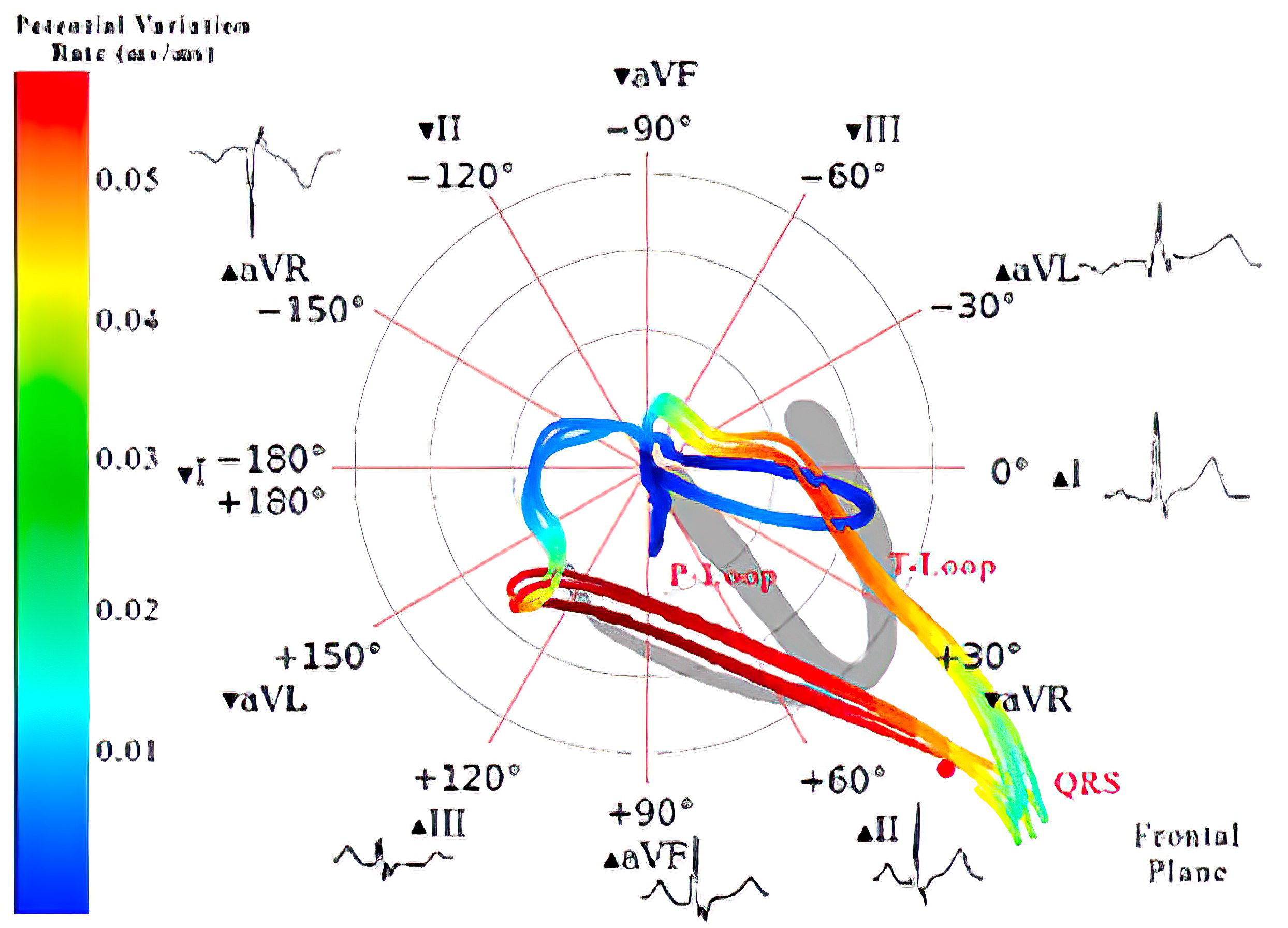
Vectorcardiograph (Frontal Plane) and Electrocardiograph Between Complete LBBB (Left) and Normal (Right)
Figure 5 compares the frontal plane vectorcardiograph and electrocardiograph of a patient with complete LBBB and an acute MI of the anterior wall with those of a healthy patient. The vectors are directed downward toward the apex and toward the left in the patient with LBBB. This is caused by impulses generated from the interventricular septum (or the septo-apical vector).
The apex of the vectors is notched in the patient with complete LBBB, representing the rsr pattern in the inferior leads, II, III, and aVF. Leads I and aVL have a broad R wave and no q wave.
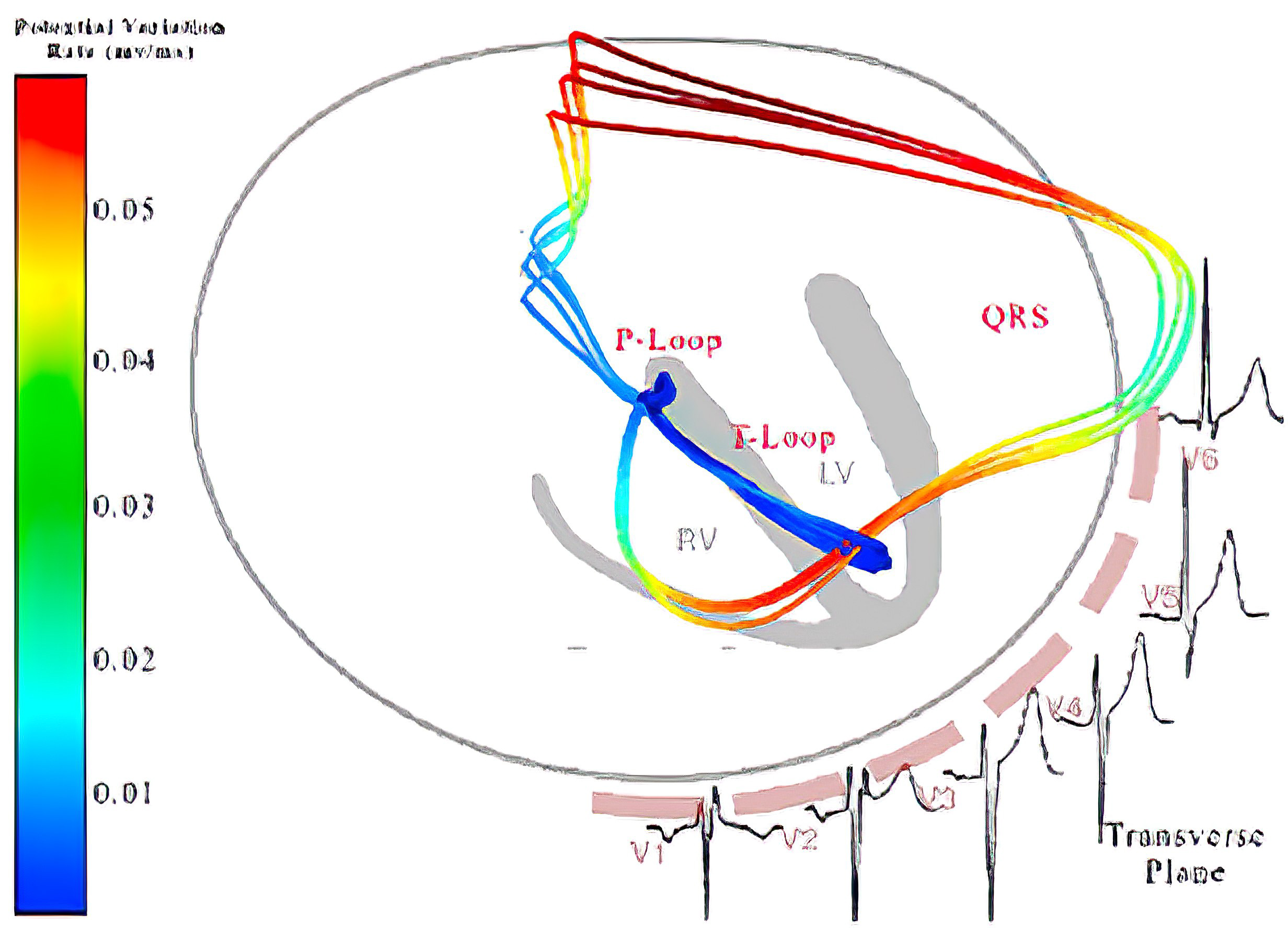
Vectorcardiograph (Transverse Plane) and Electrocardiograph Between Complete LBBB (Left) and Normal (Right)
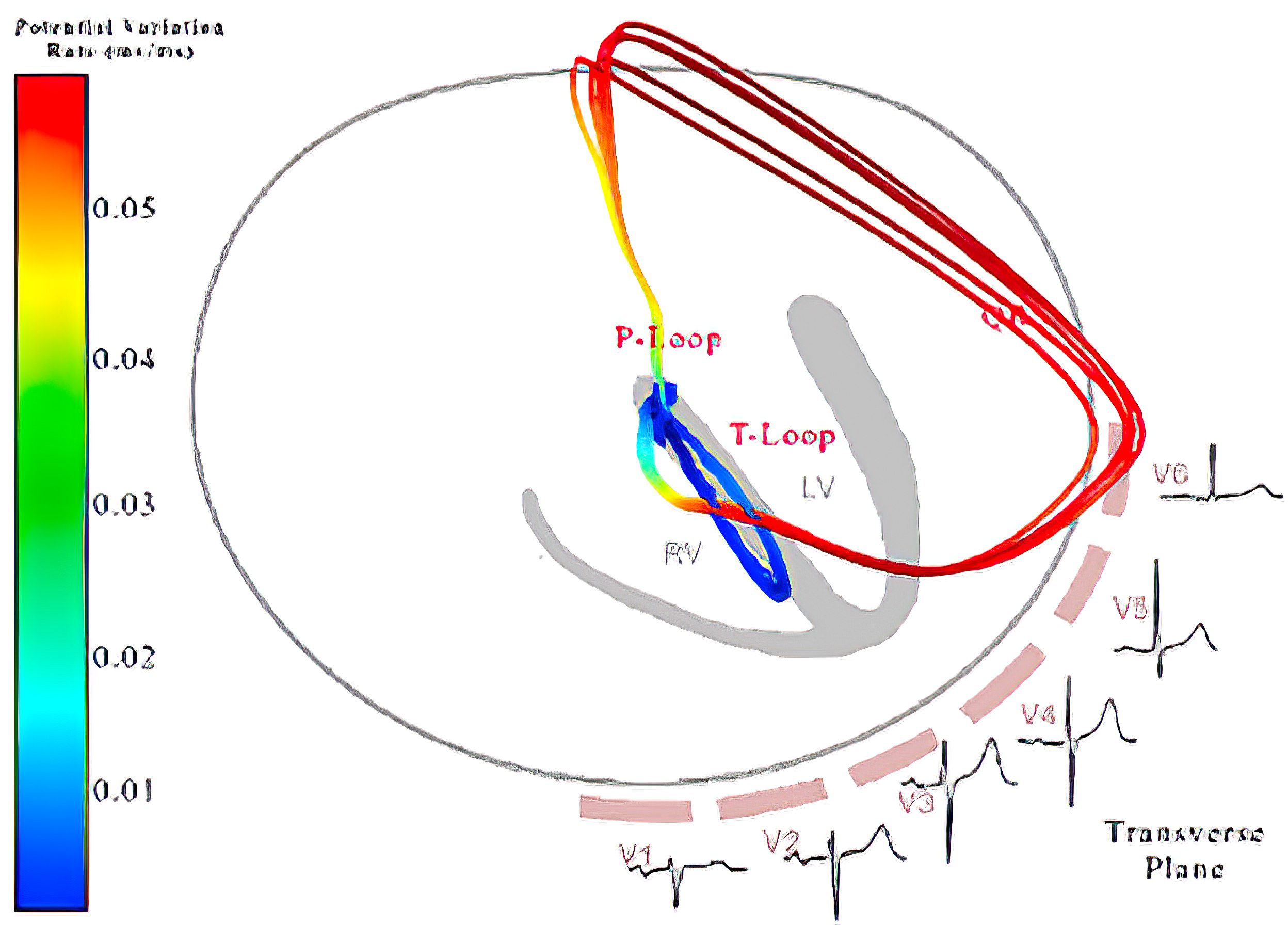
Vectorcardiograph (Transverse Plane) and Electrocardiograph Between Complete LBBB (Left) and Normal (Right)
Figure 6 shows the transverse plane of the vectorcardiograph of the same two patients, depicting precordial leads V1 through V6. In the patient with LBBB, the vectors are directed posteriorly and to the left. A broad RsR pattern is seen in leads V3 and V4, with an abrupt change to a broad QRS and notched pattern in leads V5 and V6.